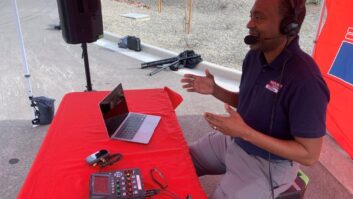Oct. 9, 1985 found me working as chief engineer of Washington’s 105.9 KIX Country. We’d signed a lease as a tenant on a new tower about 15 miles closer to the city; the project involved moving an RCA-20E transmitter and installing an Alan Dick panel antenna.
The transmitter had to be craned through a window into its second-floor home, so it was critical to use a professional rigging and hauling company — in this case United Rigging of Beltsville, Md. We worked with the Metroplex DOE, the late Doug Holland, and his associate Scott Tanner.
Before setting the transmitter in place, I remember that Doug grabbed a Sharpie Permanent Marker and had each of us sign our names on the floor. This permanent record, including the signatures of my assistant Bob Sleight and maintenance engineer Marty Wilkerson, was entombed by the weight of that RCA and a later Harris transmitter, and pretty much forgotten.
Then on March 31 of this year, Cumulus Media Market Engineer Larry Paulausky and his assistant Paul Spiegelblatt coordinated the installation of a GatesAir 20 kW box. As the Harris transmitter was moved to make way for the GatesAir, Larry and Paul discovered not only our 1985 Sharpie names but those of the engineers who’d installed the Harris in 2004.
They added their own to this growing record and snapped the picture shown.
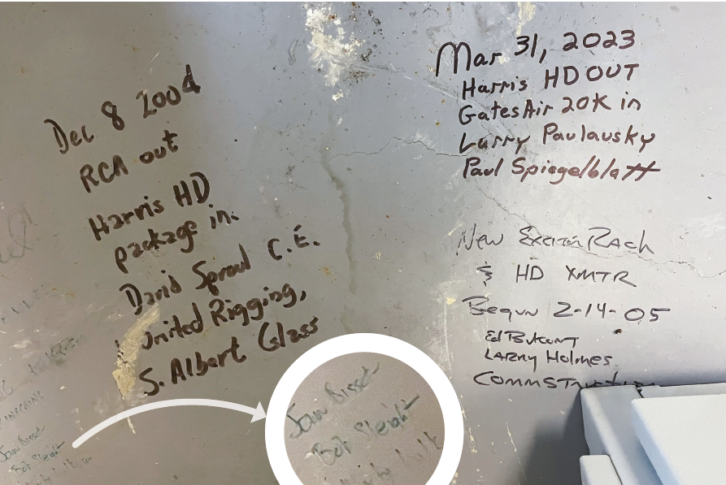
Dave Sproul, who was chief of the station when Cumulus entered the market, passed the picture along to me. These signatures show the progression of transmitters that have served 105.9 over the years. Down in the lower left of the photo, past the Dec. 8 entry, you can make out some of the faded writing from that first installation, approaching 40 years ago.
If you’re planning a transmitter install, why not start your own time capsule using a Sharpie. Who knows who will find it?
Fixing a hole
Texas-based Coast to Coast Tower Service offers a few pictures of their own, driving home a point that Sinclair Telecable Norfolk DOE Dave Morgan made here recently concerning tower maintenance.
Coast to Coast was called when a station was off the air. Inspection found several dents and burns in the antenna interbay transmission line.
Fig. 2 shows the interbay coupling box as the antenna was being dismantled.
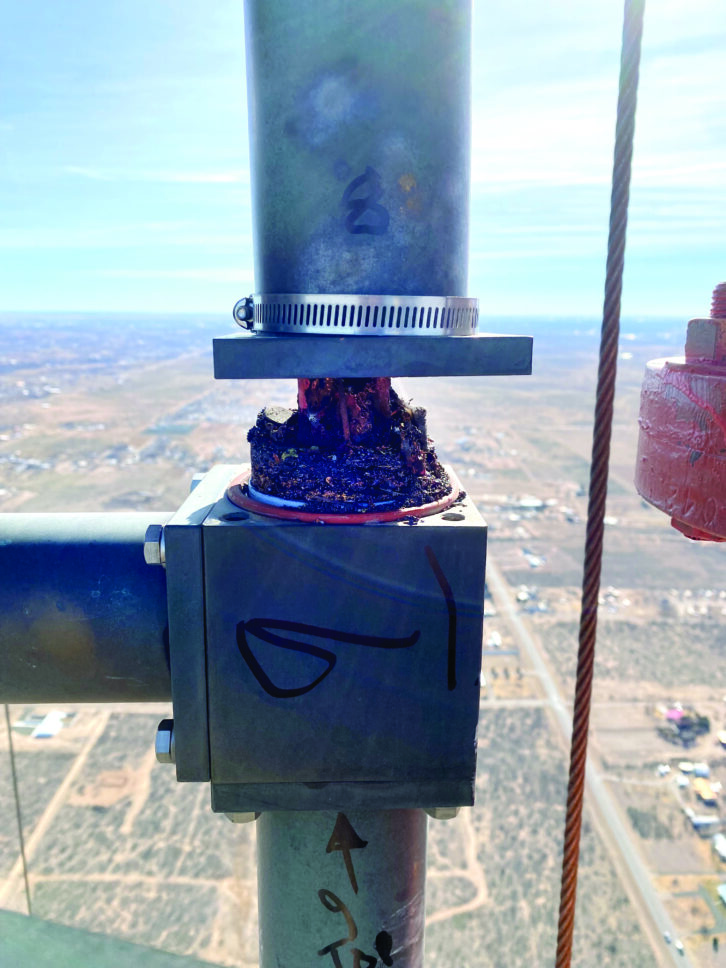
Fig. 3 shows the same junction once removed.
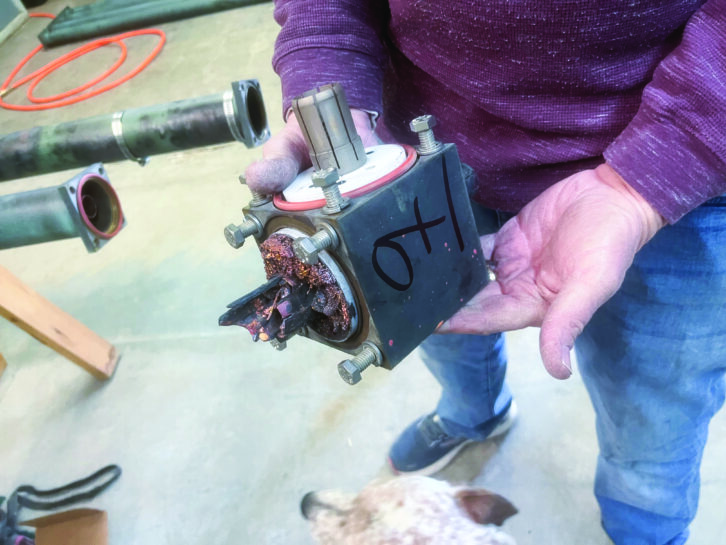
Fig. 4 shows dents and over-heating marks on the line.
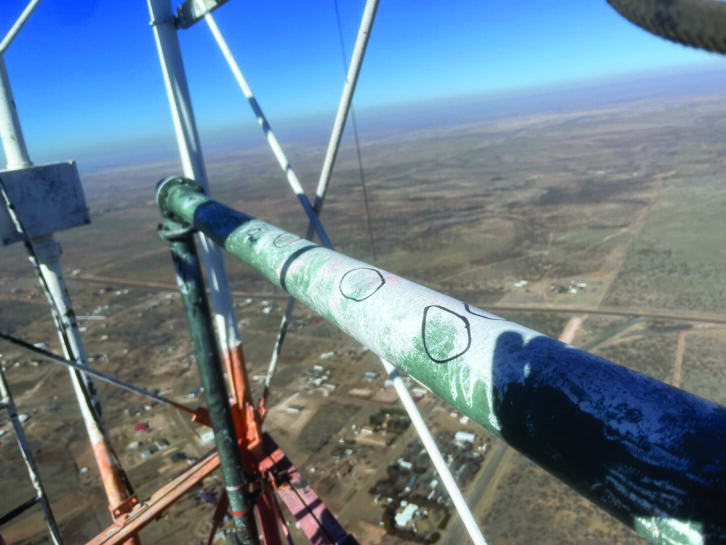
The entire 12-bay antenna was disassembled and brought to the ground for inspection and repair. After it was checked out and cleaned and new replacement parts installed, the antenna was restored to service.
One curiosity was the hole shown in Fig. 5. Was it from the burn, or was it caused by a bullet that may have initiated this catastrophe?
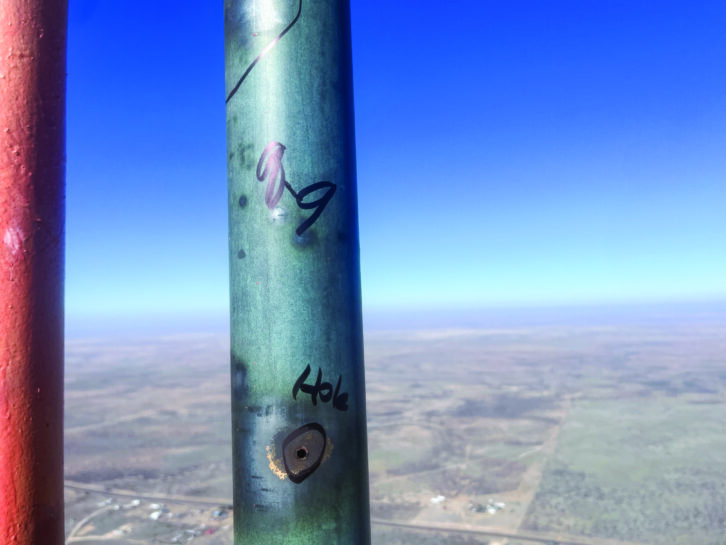
Sone things periodic inspections can’t prevent, but having a reputable tower company to service your transmission systems is good engineering practice. Coast to Coast Tower Service’s site is https://www.ctctower.com, and they are available 24/7/365.
Old manuals, anyone?
Harold Hallikainen dropped us a note of thanks for the mentions of the Western Electric 111-C transformers. He says he solved a ground loop problem between a Moseley PCL-303C Composite STL and a Gates exciter using a 111-C.
If you’ve ever wondered about the specs of this transformer, Harold writes that composite stereo was passed through the transformer with great results — plus it got rid of the ground loop! He concludes that it truly was an amazing transformer. Engineers who have repurposed these gold nuggets will agree.
If you’re not familiar with Harold’s Broadcast History reference site, visit https://bh.hallikainen .org/. Its mission: saving history from the dumpster! Through the help of contributors, Harold has amassed an unbelievable library of broadcast equipment technical manuals and historical publications.
If you maintain older gear, bookmark the site. And if you discover old equipment manuals in your files, don’t pitch them until you offer them to Harold.
Amateur radio enthusiasts will also want to visit Harold’s site.
Workbench submissions are encouraged and qualify for SBE recertification credit. Email [email protected].








